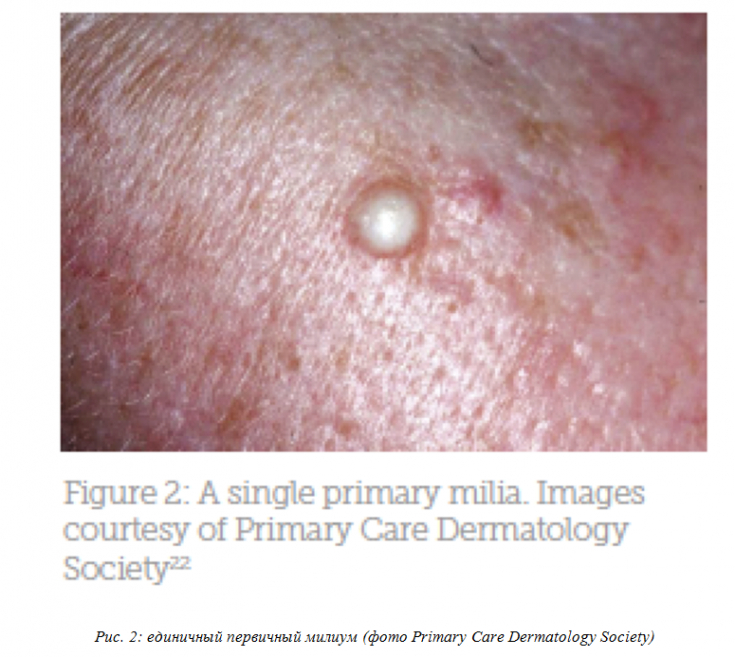There are two types of milia – primary (benign keratin-filled cysts) and secondary (the appearance of which is associated with inflammatory processes).
Unlike neonatal milia, which disappear over time without any treatment, milia in adults, for unknown reasons, are chronic. Often, after unsuccessful attempts to get rid of milia at home, patients seek help from a cosmetologist. Cosmetologist Louise Walsh talks about the types and methods of treating milia.
What is the difference between primary and secondary milia
Primary milia – homogeneous elastic subdermal formations of white or yellowish hue, the size of which is 1-3 mm. Most often, milia of this type are localized in the area around the eyes and are not accompanied by itching or any other unpleasant sensations.
Follow us on Telegram!
The appearance of secondary milia may be the result of a skin injury, or rather, damage to the pilosebaceous complex as a result of, for example: burns, epidermosis bullosa, tattoos, etc.
To prevent relapses after treatment of secondary milia, it is important to identify and eliminate the root cause of inflammatory processes, which triggered their appearance.
In order to prevent relapses after treatment of secondary milia, it is important to identify and eliminate the root cause of the inflammatory processes that triggered their appearance.

What methods are used to treat primary and secondary milia
Miliums do not pose a danger to the health of patients, therefore the main reason for their contacting clinics is psychological discomfort caused by the appearance of aesthetic imperfections on the skin.
There are no effective topical or systemic drugs for the treatment of primary and secondary milia, but cases of successful treatment of milia with topical retinoin have been documented.
Today, the following milia removal methods are available:
1. Excision
Excision with a sterile needle remains the most common technique for removing milia. Complete removal of the keratin cyst provides a satisfactory result, and the procedure itself is quick and, subject to the rules of asepsis, is associated with minimal risks for the patient. As a rule, after excision, scratches remain in place of the milia, which heal quickly.
2. Electrocoagulation
By high-frequency current through the needle, cysts are destroyed and dehydrated.
3. Cryotherapy
Controlled exposure to low temperatures is also used to successfully remove cysts.
4. Electrodesiccation
Effective removal of secondary milia is carried out by the method of drying with electric current.
5. Laser therapy
CO2 lasers are most commonly used for laser therapy of milia.
Risks and complications associated with milia removal
When choosing a method for removing primary or secondary milia, it is important to correctly assess the possible risks and results of the procedures. Often, milia are localized in a particularly delicate periorbital zone, when working with which an important condition for the safety of the patient is his immobility, as well as the accuracy of the doctor.
Millia on the skin – signal about violations in the body
Potential risks of milia removal include skin damage, infection, bleeding, and swelling. It is possible that scars appear after milia treatment, which is unacceptable for many patients, so they should be warned about this possibility at the consultation stage.
Potential risks of milia removal include skin damage, infection, bleeding, and swelling.
Please note that there is a risk of allergic reactions when using local anesthetics (for example, before electrocoagulation).

Complete elimination of milia, despite fairly good results, cannot be guaranteed by any procedure – this point, as well as the likelihood of relapses, is also worth discussing with the patient.
Due to the risk of recurrence of milia, it is recommended to prescribe courses of retinoids and gentle peels based on the patient's skin type and lifestyle. Also, for preventive purposes, products containing mineral oils and lanolin should be excluded from the skin care regimen.
Adapted from Aesthetics







Add a comment